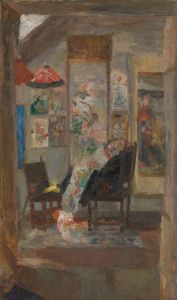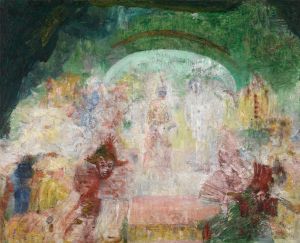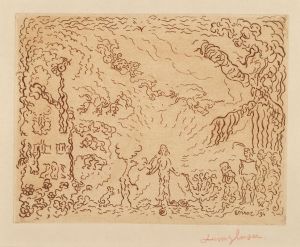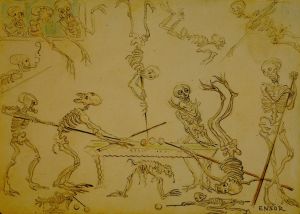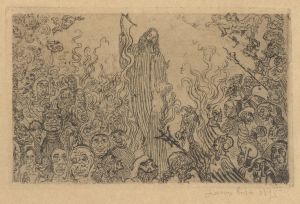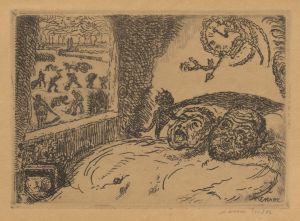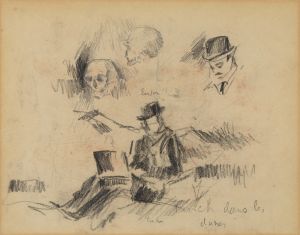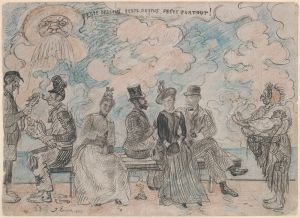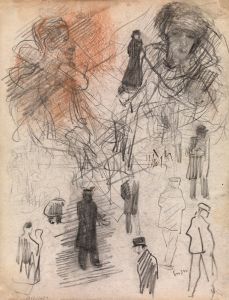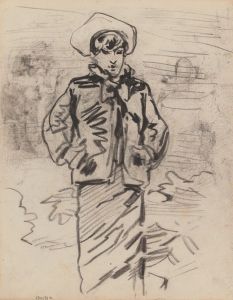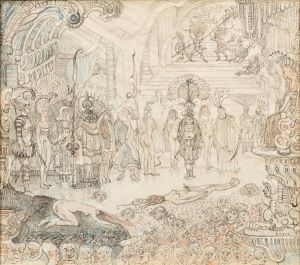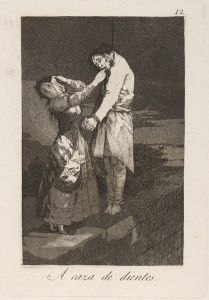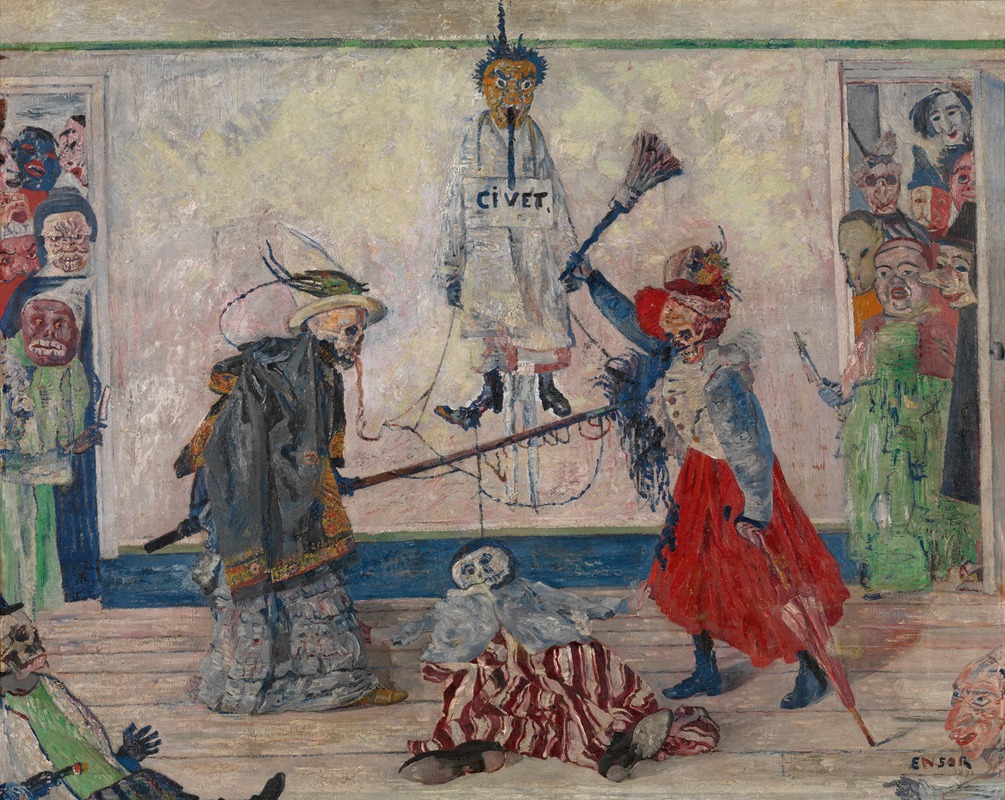
Skeletons Fighting over the Body of a Hanged Man
A hand-painted replica of James Ensor’s masterpiece Skeletons Fighting over the Body of a Hanged Man, meticulously crafted by professional artists to capture the true essence of the original. Each piece is created with museum-quality canvas and rare mineral pigments, carefully painted by experienced artists with delicate brushstrokes and rich, layered colors to perfectly recreate the texture of the original artwork. Unlike machine-printed reproductions, this hand-painted version brings the painting to life, infused with the artist’s emotions and skill in every stroke. Whether for personal collection or home decoration, it instantly elevates the artistic atmosphere of any space.
"Skeletons Fighting over the Body of a Hanged Man" is a painting by the Belgian artist James Ensor, created in 1891. Ensor, born in 1860 in Ostend, Belgium, was a prominent figure in the Symbolist movement and is known for his unique and often macabre style that combines elements of satire, fantasy, and grotesque imagery.
The painting depicts a chaotic scene where skeletons, dressed in various costumes, are engaged in a fierce struggle over the body of a hanged man. The skeletal figures are rendered with a sense of animation and expressiveness, despite their lack of flesh, which adds to the eerie and unsettling atmosphere of the work. The hanged man, central to the composition, serves as a stark reminder of mortality and the futility of human endeavors.
Ensor's use of skeletons and masks is a recurring motif in his work, symbolizing the hidden aspects of human nature and the superficiality of societal norms. The painting reflects his fascination with death and the macabre, themes that were influenced by his upbringing in a family that ran a curiosity shop filled with carnival masks, exotic objects, and other peculiar items.
The color palette of "Skeletons Fighting over the Body of a Hanged Man" is vibrant yet dark, with bold contrasts that enhance the dramatic tension of the scene. Ensor employs a mix of reds, blues, and yellows, which are juxtaposed against the stark whiteness of the skeletons, creating a visually striking composition. The brushwork is dynamic and expressive, contributing to the sense of movement and chaos within the painting.
This work is often interpreted as a critique of societal hypocrisy and the human condition. Ensor's portrayal of skeletons in conflict over a lifeless body can be seen as a metaphor for the pettiness and brutality of human interactions, even in the face of death. The painting also reflects Ensor's disillusionment with the art establishment and his contemporaries, who he felt were more concerned with superficial success than with genuine artistic expression.
"Skeletons Fighting over the Body of a Hanged Man" is housed in the Royal Museum of Fine Arts in Antwerp, Belgium. It remains one of Ensor's most famous and studied works, exemplifying his distinctive style and thematic concerns. Ensor's influence can be seen in the work of later artists, particularly those associated with Expressionism and Surrealism, who admired his bold use of color and his willingness to confront dark and taboo subjects.
James Ensor continued to produce provocative and innovative art throughout his career, earning recognition and acclaim for his contributions to modern art. He was knighted in 1929 and received numerous honors before his death in 1949. Today, Ensor is celebrated as one of Belgium's most important artists, and "Skeletons Fighting over the Body of a Hanged Man" remains a testament to his unique vision and enduring legacy.





